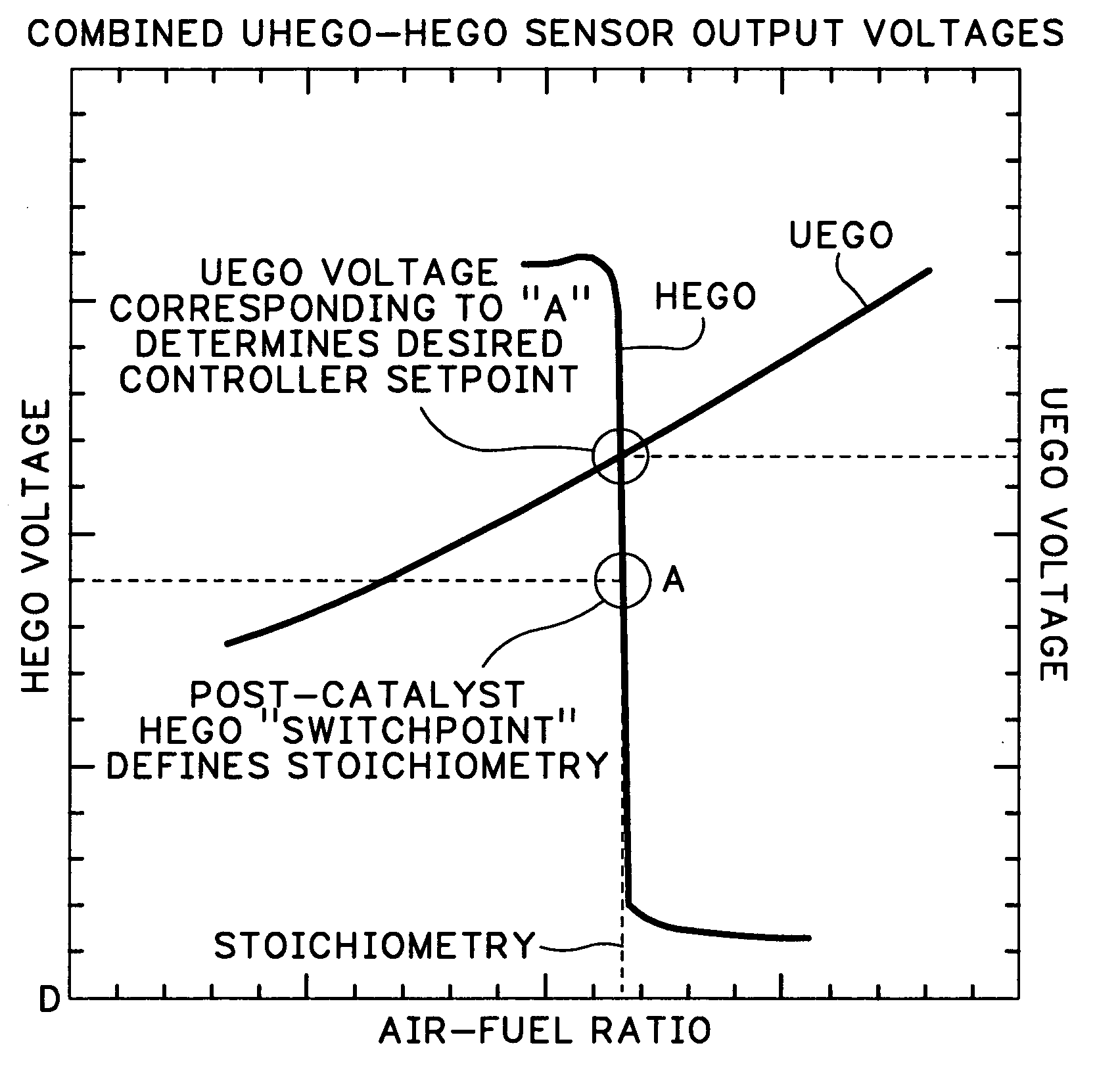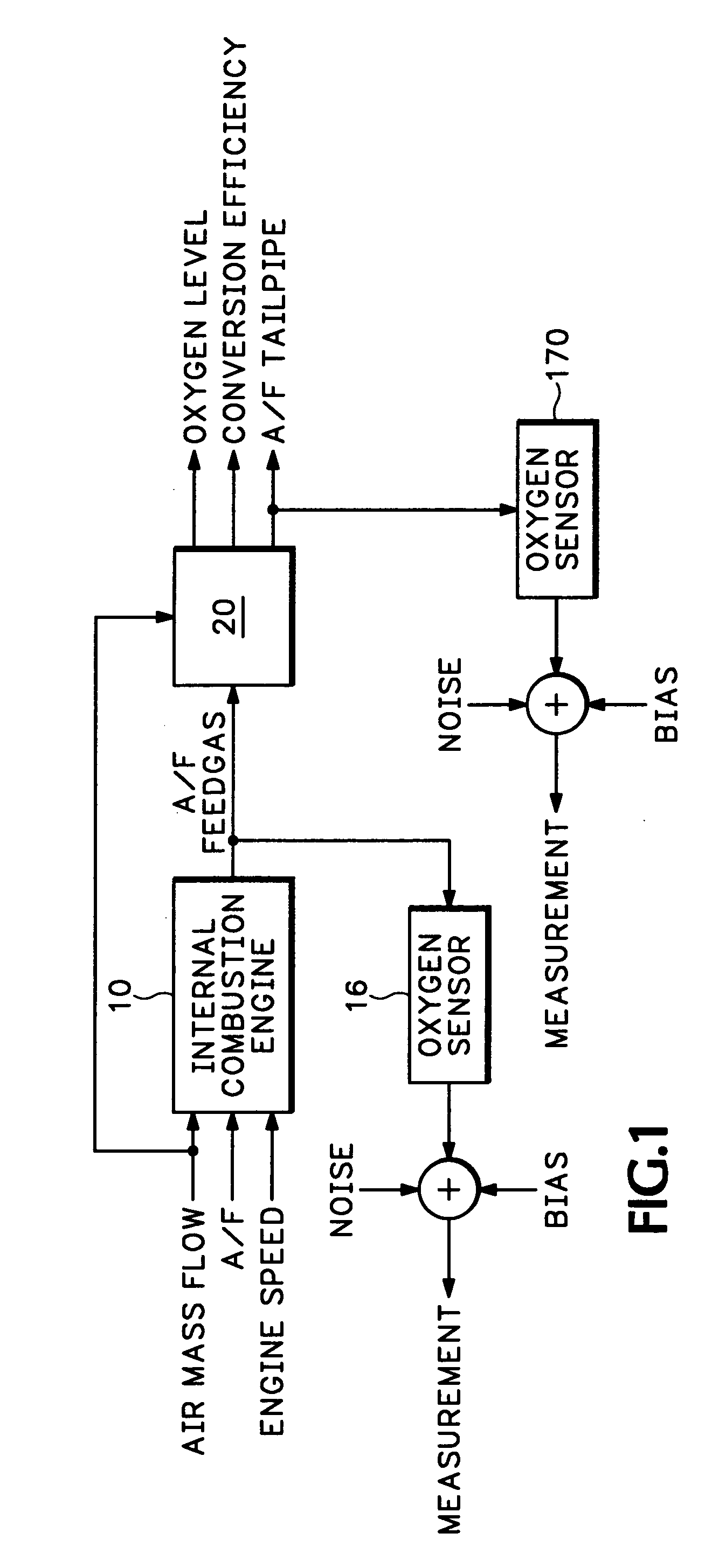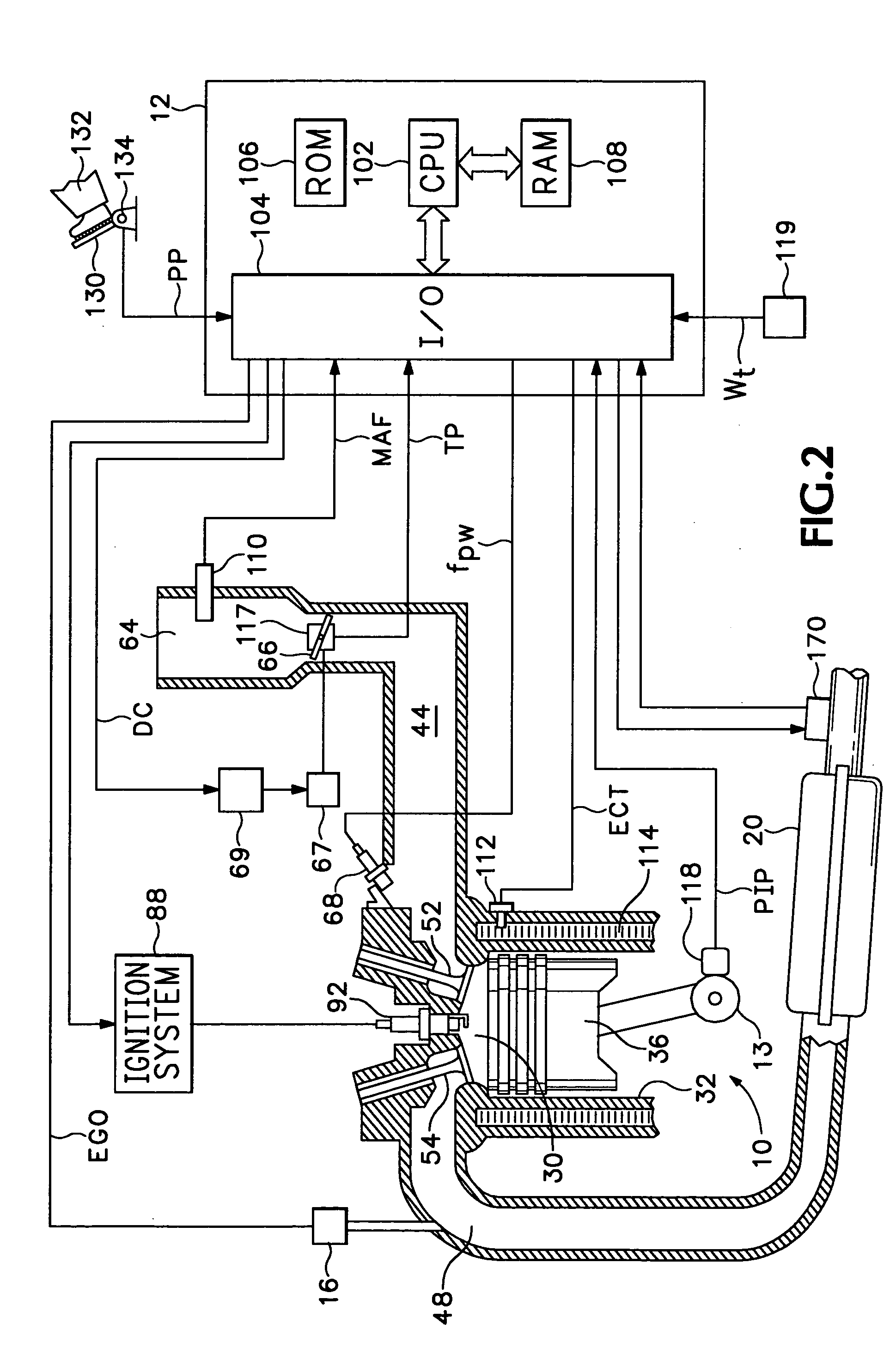Control approach for use with dual mode oxygen sensor
a control approach and oxygen sensor technology, applied in the direction of electrical control, process and machine control, instruments, etc., can solve the problems of deteriorating system emissions performance, uego sensor may not provide accurate stoichiometry, and may occur errors in perceived air-fuel ratio, etc., to achieve accurate positioning of points, reduce calibration, and high catalytic converter efficiency
- Summary
- Abstract
- Description
- Claims
- Application Information
AI Technical Summary
Benefits of technology
Problems solved by technology
Method used
Image
Examples
Embodiment Construction
[0023]The present application relates generally to a system for maintaining engine air-fuel ratio (A / F) operation within, or near, the peak efficiency window of a catalytic converter. However, the control methods and approaches herein can be used generally for air-fuel ratio control at various air-fuel ratios, even outside the peak efficiency window.
[0024]Also in this application, electronic circuitry and control algorithms are described to automatically calibrate the setpoint of a downstream UEGO sensor to correspond to the air-fuel ratio identified by the switchpoint of a HEGO sensor with a calibratible bias. In one embodiment, the generated setpoint corresponds to the switchpoint of a post-catalyst HEGO sensor with a calibratible rich bias to assure high NOx efficiency. Alternatively, the setpoint of an upstream UEGO sensor may be automatically calibrated to correspond to the air-fuel ratio identified by the switchpoint of an upstream HEGO sensor with a calibratible bias.
[0025]Re...
PUM
 Login to View More
Login to View More Abstract
Description
Claims
Application Information
 Login to View More
Login to View More - R&D
- Intellectual Property
- Life Sciences
- Materials
- Tech Scout
- Unparalleled Data Quality
- Higher Quality Content
- 60% Fewer Hallucinations
Browse by: Latest US Patents, China's latest patents, Technical Efficacy Thesaurus, Application Domain, Technology Topic, Popular Technical Reports.
© 2025 PatSnap. All rights reserved.Legal|Privacy policy|Modern Slavery Act Transparency Statement|Sitemap|About US| Contact US: help@patsnap.com



